Indian Polity: March 2024 Current Affairs | Current Affairs: Daily, Weekly & Monthly - CLAT PDF Download
Centre Notifies Rules for CAA Implementation
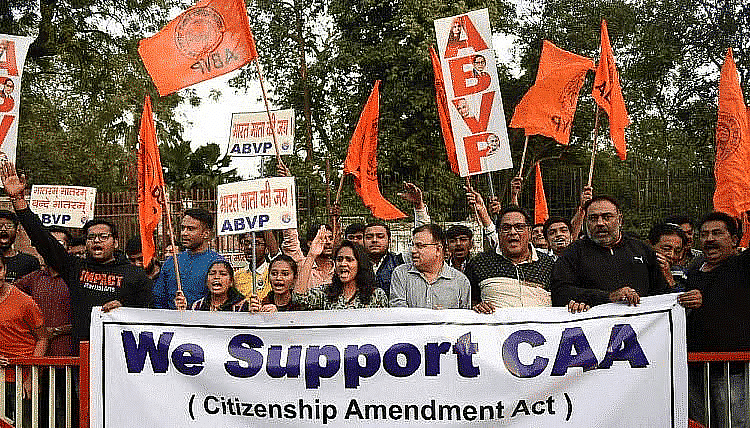
Context
- Just before the announcement of the Lok Sabha election, the Union Home Ministry officially declared the Citizenship Amendment Rules, 2024. This development paves the way for the enforcement of the Citizenship Amendment Act (CAA) that was ratified by Parliament in 2019.
- The notification of the Citizenship Amendment Rules, 2024, signals a significant step towards implementing the CAA, a legislation that has been a topic of considerable debate and discussion.
Citizenship (Amendment) Act (CAA), 2019: Key Provisions
- Basic Idea: The Citizenship (Amendment) Act (CAA), 2019, intends to modify the Citizenship Act of 1955 to provide Indian citizenship to specific groups of undocumented immigrants.
- Eligible Religions: CAA is focused on Hindu, Sikh, Buddhist, Jain, Parsi, and Christian undocumented migrants from Afghanistan, Bangladesh, and Pakistan, offering them eligibility for Indian citizenship.
- Objective: The main aim is to aid in granting citizenship to non-Muslim migrants from India's three neighboring countries with Muslim majorities.
- Residence Requirement: Normally, the Citizenship Act of 1955 mandates 11 out of the previous 14 years of residency in India for naturalization.
- Amendment: CAA decreases this prerequisite to 6 years for applicants from the specified religions and countries.
- Exemption from Criminal Cases: Individuals from the specified communities are excused from criminal proceedings under the Foreigners Act, 1946, and the Passport Act, 1920, if they arrived in India before December 31, 2014.
Definition of Illegal Migrants
- Under Current Laws: Existing regulations prevent individuals classified as illegal migrants from obtaining Indian citizenship.
- Classification by CAA: According to the CAA, an illegal migrant is defined as a foreign national who enters India without valid travel documents like a passport and visa, or who remains in the country beyond the permitted duration.
- Consequences: Illegal migrants may be subject to imprisonment or deportation as outlined in the Foreigners Act of 1946 and The Passport (Entry into India) Act of 1920.
Exceptions under CAA
Conditions for Exemption: The Citizenship Amendment Act (CAA) provides exemptions for individuals meeting specific criteria from being categorized as illegal migrants.
These conditions include:
- Belonging to certain specified religions such as Hindu, Sikh, Buddhist, Jain, Parsi, or Christian.
- Originating from Afghanistan, Bangladesh, or Pakistan.
- Having entered India on or before December 31, 2014.
- Not residing in specific tribal areas of Assam, Meghalaya, Mizoram, or Tripura (Sixth Schedule) or "Inner Line" permit areas like Arunachal Pradesh, Mizoram, and Nagaland.
Conditions for Exemption
- Individuals eligible for exemption under CAA must fulfill the following criteria:
- They must belong to religions explicitly mentioned in the act, including Hindu, Sikh, Buddhist, Jain, Parsi, or Christian.
- Their country of origin should be Afghanistan, Bangladesh, or Pakistan.
- They should have entered India on or before December 31, 2014.
- They should not be residing in specific tribal areas like Assam, Meghalaya, Mizoram, or Tripura (Sixth Schedule) or in "Inner Line" permit areas such as Arunachal Pradesh, Mizoram, and Nagaland.
Controversies Surrounding CAA
- Country of Origin: The Citizenship Amendment Act (CAA) classifies migrants based on their originating countries, particularly Afghanistan, Pakistan, and Bangladesh.
- Religious Exclusivity: Questions have been raised regarding why only six designated religious minorities are included in the provisions of the Act.
- Omission of Rohingya: The CAA fails to address the plight of Rohingya Muslims from Myanmar, a group that has faced severe persecution.
- Entry Date Differentiation: There has been significant debate surrounding the differing treatment of migrants based on whether they arrived before or after December 31, 2014.
- Secularism Concerns: Critics argue that offering citizenship based on religious grounds goes against the secular principles enshrined in India's Constitution, which are regarded as an unchangeable fundamental framework.
Constitutionality Check
- The legal challenge may primarily arise from the argument that a particular law violates Article 14 of the Constitution. This article ensures that every individual has the right to equality before the law and equal protection of the law within India.
- The Supreme Court has devised a Two-Pronged Test to assess laws based on the principles of Article 14.
- Law Violating Article 14: The core issue here is when a law infringes upon the rights guaranteed under Article 14 of the Constitution, specifically concerning equality before the law and equal protection of the law.
- Two-Pronged Test: Firstly, any differentiation between groups of individuals must be based on clear and intelligible differences. Secondly, these differences must have a logical connection to the objective intended by the law.
- Reasonable Classification: Essentially, for a law to comply with the standards set by Article 14, it must establish a 'reasonable class' of individuals subject to the law's governance. Even if the classification is deemed reasonable, all individuals falling within that category must be treated equally.
Impact on Assam and Assam Accord
- Intersection with Section 6A: The Citizenship Amendment Act (CAA) interacts with Section 6A of The Citizenship Act, 1955, which outlines citizenship qualifications in Assam.
- Assam Accord Connection: Section 6A, associated with the Assam Accord, establishes guidelines for determining citizenship in Assam, potentially conflicting with the provisions of the CAA.
- Base Cut-off Date and Regularization: The Assam Accord introduces a base cut-off date for identifying and legalizing foreigners in Assam, influencing how the CAA is implemented in the state.
Way forward
- India is a constitutional democracy with a fundamental framework that ensures a safe and inclusive environment for all Indian citizens.
- Due to its historical partition based on religious lines, India faces the challenge of safeguarding the rights of religious minority groups in its neighboring countries.
- These minority communities are frequently subjected to threats of persecution and acts of violence.
- It is imperative for India to strike a delicate balance in fulfilling its moral obligations to protect those facing persecution in neighboring nations.
Revamped Pharmaceuticals Technology Upgradation Assistance Scheme and UCPMP 2024
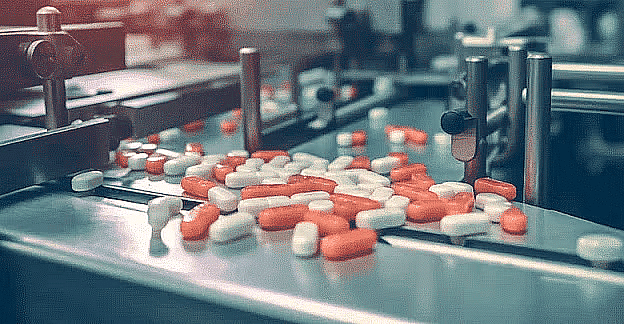
About Revamped Pharmaceuticals Technology Upgradation Assistance Scheme
- The Revamped Pharmaceuticals Technology Upgradation Assistance (RPTUAS) Scheme is an initiative by the Department of Pharmaceuticals under the Ministry of Chemicals and Fertilizers.
- It aims to enhance and upgrade technology within the pharmaceutical industry.
- This scheme provides financial assistance to pharmaceutical companies for adopting new technologies and upgrading their existing infrastructure.
- The primary objective of the RPTUAS is to promote innovation, improve quality standards, and increase the competitiveness of the pharmaceutical sector.
- By participating in this scheme, companies can modernize their facilities, improve manufacturing processes, and comply with international quality standards.
- The objective is to provide subsidies based on quality reimbursement to assist pharmaceutical companies in obtaining revised Schedule M and WHO-GMP certifications.
- The revised guideline aims to bolster the pharmaceutical industry's transition to the Revised Schedule-M and WHO-GMP standards, elevating the quality and safety of pharmaceutical products manufactured within the country.
Key Features of the Revised Scheme:
- Broadened Eligibility Criteria: The eligibility for the PTUAS has been widened to encompass any pharmaceutical manufacturing unit with a turnover of less than 500 crores necessitating technology and quality enhancement, extending beyond Micro, Small, and Medium Enterprises. Preference is still given to MSMEs to aid smaller entities in achieving high-quality manufacturing standards.
- Flexible Financing Options: The scheme introduces more adaptable financing options, emphasizing subsidies on a reimbursement basis rather than the traditional credit-linked approach.
- Comprehensive Support for Compliance with New Standards: Aligned with revised Schedule-M and WHO-Good Manufacturing Practice (GMP) standards, the scheme now endorses a wider array of technological upgrades encompassing enhancements like HVAC systems, water and steam utilities, testing laboratories, and more.
- State Government Scheme Integration: The revised scheme facilitates integration with state government schemes, enabling units to gain additional top-up assistance. This collaborative strategy aims to optimize support for the pharmaceutical industry in their technology enhancement endeavors.
What is Pharmaceuticals Technology Upgradation Assistance Scheme?
- PTUAS has been incorporated as a sub-scheme under the Scheme - Strengthening of Pharmaceutical Industry (SPI), which was launched in July 2022.
Election Commission of India
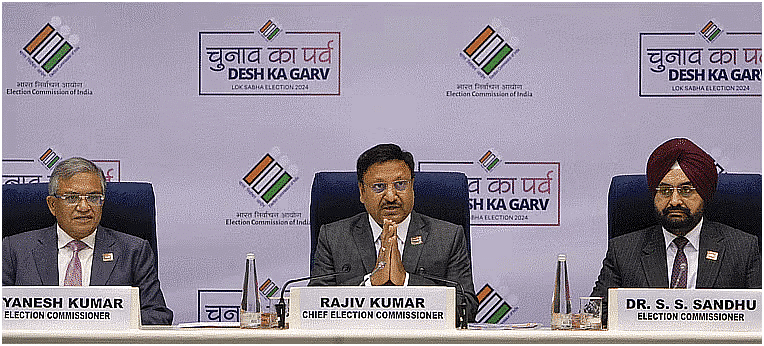
Why in News?
Recently, the Election Commissioner of India resigned from his post, just days ahead of the announcement of the Lok Sabha elections.
What is the Election Commission of India?
- The Election Commission of India is a constitutional body responsible for overseeing the electoral processes in the country. It ensures free and fair elections at all levels of government. Here are some key points about the Election Commission of India:
- It was established on January 25, 1950.
- The Election Commission consists of the Chief Election Commissioner and other Election Commissioners.
- One of its primary functions is the superintendence, direction, and control of the preparation of the electoral rolls.
- The Election Commission also monitors the election campaigns to ensure that political parties adhere to the regulations.
- For example, during the elections, the Election Commission implements the Model Code of Conduct to ensure fair play among all political parties. This code lays down guidelines to regulate political parties and candidates to maintain a level playing field during elections.
- In recent years, the Election Commission has introduced various technological advancements to improve the efficiency and transparency of the electoral process. For instance, the introduction of Electronic Voting Machines (EVMs) has helped in reducing electoral fraud and ensuring accurate results.
- This HTML snippet provides a structured and organized summary of the information about the Election Commission of India presented in the provided content. The content has been paraphrased and expanded upon with additional details and examples for better understanding.
About the Election Commission of India
- The Election Commission of India (ECI) is an independent constitutional body established on 25th January 1950 to oversee both Union and State elections within the country. This significant date is celebrated as National Voters' Day.
- Headquartered in New Delhi, the ECI's primary responsibility includes conducting elections for the Lok Sabha, Rajya Sabha, State Legislative Assemblies, as well as the offices of the President and Vice President.
- Notably, the ECI does not handle elections for local bodies such as panchayats and municipalities, with separate State Election Commissions established for this purpose.
Constitutional Foundation of the ECI
- The Election Commission operates under Part XV (Article 324-329) of the Indian Constitution, which outlines its duties and establishment.
- Key constitutional provisions include Article 324, which vests the superintendence, direction, and control of elections in the Election Commission, and Article 326, which mandates adult suffrage for elections.
Structure of the Election Commission
- Originally comprising a single Election Commissioner, the ECI transitioned into a multi-member body following the Election Commissioner Amendment Act 1989.
- Presently, the Election Commission consists of the Chief Election Commissioner (CEC) and two Election Commissioners (ECs), appointed by the President.
- At the state level, the Chief Electoral Officer assists in election-related matters.
Appointment, Tenure, and Removal
- The Chief Election Commissioner and Election Commissioners are appointed by the President in accordance with the CEC and Other ECs (Appointment, Conditions of Service and Term of Office) Act, 2023.
- They serve a fixed term of six years or until the age of 65, with salary and benefits equivalent to those of the Cabinet Secretary.
- Removal procedures differ for the CEC and ECs, with the former requiring a process akin to that of a Supreme Court judge by Parliament and the latter subject to the CEC's recommendation.
Limitations and Criteria
- The Constitution does not specify qualifications for Election Commission members, their term limits, or post-retirement restrictions on government appointments.
Key Points about Election Commission of India
- The Election Commission of India was established on 25th January 1950, which is celebrated as National Voters' Day.
- The commission's headquarters are located in New Delhi.
Responsibilities of the Election Commission
- The Election Commission conducts elections for the Lok Sabha, Rajya Sabha, State Legislative Assemblies, President, and Vice President in India.
- It does not handle elections for panchayats and municipalities, as each state has a separate State Election Commission for this purpose.
Constitutional Provisions
Constitutional Provisions related to elections are outlined in Part XV (Article 324-329) of the Indian Constitution.
- Article 324 vests the superintendence, direction, and control of elections in the Election Commission.
- Article 325 ensures that no one can be excluded from electoral rolls based on religion, race, caste, or sex.
- Article 326 mandates that elections to the House of the People and State Legislative Assemblies be based on adult suffrage.
- Article 327 grants Parliament the power to regulate elections to legislatures.
- Article 328 gives State Legislatures the authority to govern elections to their legislatures.
- Article 329 prohibits courts from interfering in electoral matters.
Structure of Election Commission of India (ECI)
- The Election Commission was initially a single-member body, but the Election Commissioner Amendment Act 1989 transformed it into a multi-member entity.
- Currently, the ECI comprises the Chief Election Commissioner (CEC) and two Election Commissioners (ECs) appointed by the President.
- At the state level, the Chief Electoral Officer assists the election commission in its functions.
Subsidy Extension for PMUY
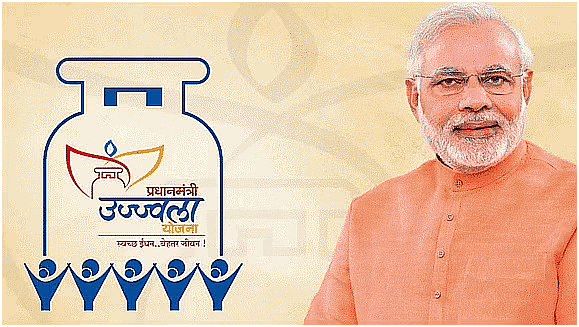
Why in News?
The Union Cabinet extended the subsidy of Rs 300 per 14.2-kg cylinder under the Pradhan Mantri Ujjwala Yojana (PMUY) for up to 12 refills per year till the end of 2024-25.
What is Pradhan Mantri Ujjwala Yojana (PMUY)?
About:
- In May 2016, the Ministry of Petroleum and Natural Gas introduced the 'Pradhan Mantri Ujjwala Yojana' (PMUY) to provide clean cooking fuel like LPG to rural and deprived households.
- This aimed to replace traditional cooking fuels like firewood and coal, which had negative impacts on the health of rural women and the environment.
- Under Ujjwala 2.0 (Phase-2 of PMUY), a special provision has been made for Migrant Families to avail of new connections using Self-Declaration instead of Proof of Address (PoA) and Ration Card (RC).
PMUY Benefits:
- Government provides Rs. 1600 for a 14.2kg cylinder connection or Rs. 1150 for a 5kg cylinder.
- The PMUY provides a subsidy of Rs 300 per 14.2 kg cylinder of LPG to eligible beneficiaries. This subsidy is available for up to 12 refills per year and is credited directly to the beneficiaries' bank accounts.
- PMUY beneficiaries receive the first LPG refill and stove (hotplate) free of cost from Oil Marketing Companies (OMCs).
- Phase-I Achievements: Target of 8 crore connections achieved by September 2019.
- Phase-2 (Ujjwala 2.0): Launched in August 2021, the target of 1 crore additional connections achieved in January 2022.
- Subsequently, the Government decided to release 60 lakh more LPG connections under Ujjwala 2.0 and the target of 1.60 crore under Ujjwala 2.0 connections was achieved in December 2022. Thus taking overall connections under the scheme to 9.6 Crore.
- The Government of India has approved the release of an additional 75 lakh connections under the PMUY Scheme, taking the overall target to 10.35 Crore, (10.2 Crore has been achieved as of 7th March 2024).
Reforming India’s Undertrial Bail System
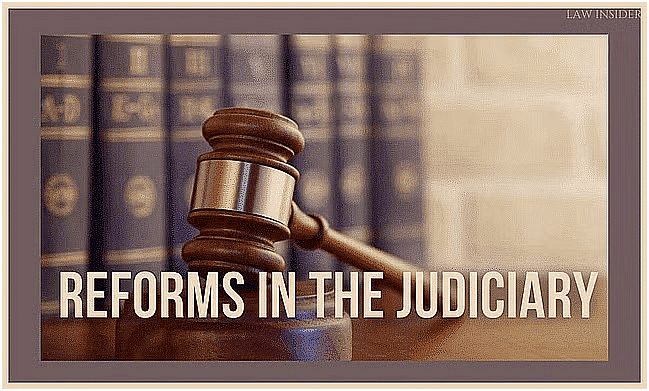
Overview
- India's bail system is under scrutiny due to its ineffectiveness and contribution to prison overcrowding.
- Lack of comprehensive data hampers policy formulation and reform efforts.
Issues with India’s Bail System
- Overcrowded Prisons: India's prisons operate at 118% capacity, with over 75% undertrial prisoners, indicating a slow bail process.
- Lack of Comprehensive Data: Detailed data on bail outcomes and undertrial socio-economic profiles are absent, hindering policy effectiveness.
- Marginalized Groups Suffer: Economically disadvantaged individuals struggle to meet bail conditions, as they often involve financial sureties.
- Fair Trial Programme data shows 93.48% of represented undertrials lack assets, making bail conditions challenging to fulfill.
- Challenges in Bail Compliance
- 14% of undertrials fail to meet bail conditions, exposing systemic flaws.
- Arbitrary Arrest Safeguards: Protections against arbitrary arrests are inadequate, disproportionately affecting migrants and those lacking assets or family support.
- Flawed Assumptions: The system assumes arrested individuals possess financial means, alienating those without resources.
Judicial Views on India’s Bail System
- The Supreme Court acknowledges flaws in the bail system, highlighting its role in jail overcrowding.
- Guidelines issued in Satender Kumar Antil vs CBI advocate for bail reform, emphasizing the presumption of innocence and 'bail not jail' principle.
- Recommendations include setting bail application timelines and new legislation.
Recommendations for Reform
- Enact Specific Bail Legislation: Implement legislation recommended by the Supreme Court to address systemic issues.
- Base Reforms on Empirical Data: Use empirical data on undertrials to identify and address socio-economic barriers to bail access.
- Rethink Bail Conditions: Adjust bail conditions, particularly financial requirements, to accommodate the realities of undertrials without assets.
- Ensure Transparency: Courts should document reasons for bail rejections to enhance transparency and accountability.
Dispute over the Shanan Hydropower Project

In the news
- A longstanding dispute between Punjab and Himachal Pradesh over the ownership of the Shanan hydropower project has escalated, leading to legal intervention by both parties.
- As the 99-year-old lease of the project expired on March 2, the Centre has issued orders to maintain status quo until a final decision is reached.
Shanan Hydropower Project and the Dispute
- Location: It is located on the Uhl River, a tributary of the Beas River, in Mandi district, Himachal Pradesh, India.
- British-era Lease: The 110-MW Shanan hydel project was leased to Punjab in 1925 by the then-ruler of Mandi, Raja Joginder Bahadur, under a 99-year lease agreement.
- Competing Claims: Himachal Pradesh contends that the project should revert to its control upon the expiry of the lease, citing historical and legal grounds for its claim.
- Economic Significance: The project has significant economic implications for both states, contributing to their power generation capacities and regional development.
Punjab’s Claims over the Project
- Historical Ownership: The project historically supplied power to undivided Punjab and Delhi before Independence, and it was allocated to Punjab during the reorganization of states in 1966.
- Legal Basis: Punjab asserts its legal control over the project under the provisions of the Punjab Reorganisation Act, 1966, reinforced by a central notification issued in 1967.
- Utilization of Resources: Punjab argues that it has invested in the maintenance and operation of the project, making it a vital component of its energy infrastructure.
Legal Proceedings and Centre’s Intervention
- Supreme Court Petition: Punjab has filed a suit in the Supreme Court, seeking a permanent injunction against Himachal Pradesh from disturbing its lawful possession of the project.
- Interim Status Quo Order: The Centre, invoking its powers under relevant laws, has ordered the status quo on the project’s functioning until a final decision is made, emphasizing the public interest in maintaining stability.
- Legal Interpretation: The interpretation of historical agreements and legislative acts will be pivotal in determining the rightful ownership of the project.
 |
Download the notes
Indian Polity: March 2024 Current Affairs
|
Download as PDF |
Implications and Future Course of Action
- Interim Measure: The Centre’s order is an interim measure to prevent disruption in the functioning of the Shanan Power House until the dispute is resolved.
- Legal Framework: Both parties are expected to proceed further within the legal framework to settle the dispute, ensuring adherence to due process and fairness.
- Regional Cooperation: A collaborative approach between Punjab and Himachal Pradesh, facilitated by federal authorities, could lead to a mutually beneficial resolution and promote inter-state harmony.
Holistic Progress Card
Overview
Traditional report cards in schools are undergoing a significant transformation with the introduction of a new 'holistic progress card' (HPC) by the National Council for Educational and Research Training (NCERT).
About Holistic Progress Card (HPC)
- Developed by PARAKH under NCERT: PARAKH, a standard-setting body under NCERT, designed the HPC for the foundational, preparatory, and middle stages of education.
- Aligned with NEP 2020: The HPC aligns with the suggestions of the National Education Policy 2020.
- Comprehensive assessment: It incorporates feedback from parents, classmates, and self-evaluation by students to provide a comprehensive view of students' progress.
- Focus areas: It evaluates academic performance, cognitive abilities, socio-emotional skills, and creativity during class activities.
- Aligned with NCFSE: The HPC aligns with the National Curriculum Framework for School Education.
Features of Holistic Progress Card
- 360-degree evaluation: It moves away from traditional marks or grades to evaluate students.
- Active learning: Students are engaged in class activities as active agents, prompting the application of diverse skills and competencies.
- Identification of strengths and weaknesses: Teachers identify strengths like collaboration and creativity, as well as weaknesses such as lack of attention or peer pressure.
- Student involvement: Students evaluate their own and their classmates' performance, promoting reflection and setting goals.
- Ambition card: At the middle stage, students outline their aspirations, areas for improvement, and necessary skills and habits.
- Parental involvement: Parents contribute insights on homework, classroom engagement, and balancing extracurricular activities.
- Peer evaluation: Students assess their classmates' contributions to activities.
Benefits of Holistic Progress Card
- Beyond numerical grades: Focuses on descriptive and analytical evaluations, fostering competency-based assessment and holistic growth.
- Shift to formative assessment: Promotes a move from summative to formative assessment, supporting competency-based evaluation.
- Insights for teachers and parents: Provides insights to support each student's learning journey.
FIR and General Diary
The Supreme Court's ruling emphasizes the distinction between recording cognizable offences in the First Information Report (FIR) and the General Diary (GD) as per the Police Act, 1861.
General Diary (GD)
- Definition: Also known as Station Diary or Daily Diary, it records significant events in a police station as per the Police Act or State Police Manuals.
- Purpose: It documents various transactions including complaints, charges, arrests, property seized, witnesses examined, and other occurrences.
- Maintenance: Entries are made chronologically with a new entry starting each day.
- Relationship with FIR: Summarizes each FIR and maintains cross-references between GD and FIR Book.
Types of General Diary Entries
- Lost and Found Items: Reports regarding lost property or discovered items.
- Non-Criminal Incidents: Such as accidents, fires, or natural disasters.
- Public Complaints: Disturbances, public nuisances, or other issues needing attention.
- Suspicious Activities: Information on suspicious individuals or activities.
- Requests for Police Assistance: Instances where assistance is sought for non-criminal matters.
- Information Gathering: Recording information from informants or the public.
Structure of General Diary Entries
- Heading: Title, date, reference number.
- Introduction: Purpose and background.
- Main Content: Detailed description, actions taken, persons involved.
- Conclusion: Summary of key points.
- Signature and Approval: Signed by the responsible officer, may need higher authority approval.
- Annexures: Supporting documents if applicable.
Lodging a General Diary Entry
- Who Can Lodge: Any person, not restricted to victims or witnesses.
- When to Lodge: For incidents as they occur or are likely to happen.
- Procedure: Submit a written application to the Officer-in-Charge (OC) of the police station.
Legal Framework and Court Judgments
- CBI v. Tapan Kumar Singh (2003) 6 SCC 175: GD Entry may be treated as an FIR in appropriate cases.
- State by Lokayukta Police v. H. Srinivas: Emphasized GD's importance; absence doesn't invalidate proceedings.
Legislative References
- Police Act 1861: Section 44 mandates GD maintenance.
- Section 154, CrPC: Prescribes recording of information in cognizable cases.
- Section 155, CrPC: Guides handling of information in non-cognizable cases.
First Information Report (FIR)
- Definition: Written document based on information about a cognizable offence.
- Initiation of Investigation: Investigation begins after FIR filing.
- Lodging: Can be filed by anyone with knowledge of the offence.
- External Distribution: Copies sent to superior officers and concerned Magistrate.
- Complainant's Signature: Obtained in the FIR Book.
- Confidentiality: FIR copies provided to complainant; GD remains internal.
- Magistrate's Authority: Can inspect GD if necessary.
Distinctions between FIR and GD
- External Distribution: FIR copies sent to Magistrate; GD copies not.
- Complainant's Signature: Obtained in FIR Book, not GD.
- Confidentiality vs. Disclosure: FIR copies provided to complainant; GD internal.
- Magistrate's Oversight: Can inspect GD as needed.
Amendments to the Electricity (Rights of Consumers) Rules, 2020
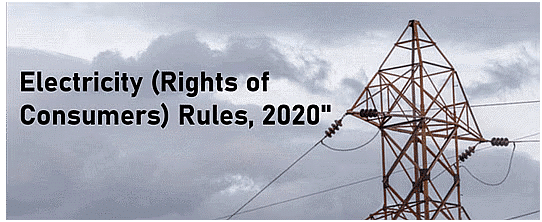
Why in News?
Recently, the Ministry of Power has notified amendments to the Electricity (Rights of Consumers) Rules, 2020, to accelerate the installation of Rooftop Solar Projects and empower consumers – with provisions on connections in residential societies and solving complaints on meter readings.
What are the Major Amendments in Electricity Rules, 2020?
Easier and Faster installation of Rooftop Solar Systems
- Exemption has been given for the requirement of technical feasibility study, for systems up to a capacity of 10 kW.
- For systems of capacity higher than 10 kW, the timeline for completing the feasibility study has been reduced from 20 to 15 days.
- A technical feasibility study typically involves assessing factors such as site suitability, structural integrity of the building, available sunlight exposure, electrical infrastructure compatibility, and potential obstacles or challenges that may affect the installation and operation of the solar panels.
- It is mandated that the distribution system strengthening necessary for rooftop solar PV systems up to 5 kW capacity will be done by the distribution company at its own cost.
- Further, the timeline for the distribution licensee to commission Rooftop Solar PV systems has been reduced from 30 to 15 days.
Separate Connections for Electric Vehicle Charging Stations
- Consumers can obtain separate electricity connections for charging their Electric Vehicles (EVs).
- This aligns with India’s goal of reducing carbon emissions and reaching Net Zero by the year 2070.
- The time period for obtaining a new electricity connection has been reduced from 7 to 3 days in metropolitan areas, from 15 to 7 days in other municipal areas, and from 30 to 15 days in rural areas.
- However, in rural areas with hilly terrain, the time period for new connections or for modifications in existing connections will remain thirty days.
Additional Rights for Consumers in Residential Colonies and Flats
- Owners residing in co-operative group housing societies, multi-storied buildings, residential colonies, etc., will have the option to choose from the distribution licensee either individual connections for everyone or a single-point connection for the whole premises.
- The exercise of the option will be based on a transparent ballot to be conducted by the Distribution Company.
- Parity has also been brought in the tariff charged to consumers who get electricity supplied through single-point connection and to those who avail of individual connections.
Metering, billing, and collection will be done separately for
- Individual electricity consumption sourced from the distribution licensee
- Individual consumption of backup power supplied by the residential association
- Electricity consumption for common areas of such residential associations, which is sourced from the distribution licensee.
Mandatory Additional Meter in cases of Complaints
- In cases where consumers raise complaints about meter reading not aligning with their actual electricity consumption, the distribution licensee is now required to install an additional meter within five days from the date of receipt of the complaint.
- This additional meter will be used to verify the consumption for a minimum period of three months, thus reassuring consumers and ensuring accuracy in billing.
Amul a Pillar of India’s Dairy Sector
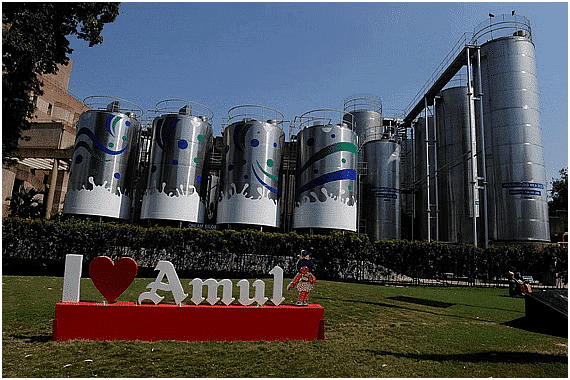
Context
Gujarat Cooperative Milk Marketing Federation turns 50.
Brief History in background
- Amul Milk Union Limited, also known as Amul India, was established on 19 December 1946 in Anand, Gujarat, India, as a response to the exploitation of milk producers by brokers and agents who controlled milk prices.
- Polson, a dominant dairy company at the time, had monopolized milk collection and supply in the Kaira region, buying milk from farmers at low rates.
- In 1942, Sardar Patel highlighted Polson's unfair practices and the collusion between the company and the British government.
- Angered by the exploitation, farmers sought help from local leader Tribhuvandas Patel and approached Sardar Vallabh Bhai Patel for guidance.
- Sardar Patel advised farmers to form a cooperative, the Kaira District Co-operative Milk Producers Union, to supply milk directly to Mumbai, bypassing Polson. Morarji Desai was tasked with organizing the farmers.
- A pasteurization unit was established in Anand, and the Kaira District Cooperative formed the Anand Milk Producer Union Limited (AMUL) in 1946.
- The union established milk cooperative societies in every village to purchase milk from farmers twice a day.
- Dr. Verghese Kurien and H.M. Dalaya played crucial roles in the cooperative's development, with Dalaya pioneering the creation of skimmed milk powder from buffalo milk, supported by Kurien.
- The National Dairy Development Board was established, with Kurien appointed as its head, marking the beginning of the White Revolution (Operation Flood).
- Phase 1 (1970-1980) focused on connecting four metropolitan cities.
- Phase 2 (1980-1985) saw the addition of 43,000 cooperatives and 4.5 million farmers, along with the introduction of the Raksha vaccine for cattle health.
- Phase 3 (1985-1990s) expanded to include 10 million farm families, resulting in the daily production of 2.5 crore liters of milk.
A three-tier Model of Amul
- Amul is an amazing organization that is simple and yet awe. It operates on a three-step method which ensures that each body performs its function efficiently. The three tiers are:
- Village Dairy Cooperative Society Every manufacturer is a member of the cooperative village which is a manufacturer’s community.
- District Milk Unions -Village Dairy Cooperative Society members elect their representatives which collectively forms the District Milk Union.
- State Milk Federation-The State Milk Federation is responsible for the distribution and sale of milk products on the market.
Snapshot of India’s dairy sector
- Dairy sector contributes one-fourth of total income generated in agriculture sector and this share has been rising.
- Per capita production of milk in India has now exceeded the recommended dietary allowance (RDA).
- India is the largest milk producing nation in the world with one-fourth of global production.
- Per capita absorption of milk and milk products has almost doubled during the last 20 years.
Challenges in India’s Dairy sector
- International market share: Despite being the top producer, India’s share of milk and dairy products in global dairy export is less than 1% as compared to other exporters such as Germany (14.4%), New Zealand (12.9%), Belgium (7.6%), Netherlands (6.69%) and France (6.65%). India faces tough competition with other global players regarding sanitary standards and certification difficulties, particularly in developed markets.
- Low productivity: India’s productivity per animal is very low. The significant reasons are limited availability and affordability of quality feed and fodder, traditional feeding practices, lack of veterinary, limited supply of quality animals, and ineffective cattle and buffalo breeding programs.
- Production Inefficiency: Inadequate farm management, Inadequate access to finances, lack of affordable technology, and access to information led to low production efficiency in India.
- Safety and Quality issues: India faces quality issues due to contaminated water, milk adulteration, use of pesticides, mycotoxins, heavy metals, and veterinary drugs.
- Cold chain infrastructure: –There is a lack of required infrastructure of chilling plants and bulk coolers to prevent contamination and spoilage at village level.
- Power availability:- Many chilling plants suffer due to shortage of electricity and do not run optimally leading to poor quality and shelf life of milk.
- Quality testing infrastructure and trained work force:- Adequate quality testing infrastructure is not available at milk collection centres. The problem is compounded by the lack of trained manpower to undertake quality testing.
- Increased emission of greenhouse gases by ruminants: Doubling population of female bovines means GHG emissions by dairy animals has doubled in the last 50 years.
- High antibiotic usage in dairy sector: Chemicals are indiscriminately used in commercial dairy which adversely affects quality of livestock and milk. Urine and dung of animals with chemicals affects soil microbes
Way Ahead
- Investments in Milk Value Chain and Market Expansion: Directing investments towards enhancing the milk value chain and accessing high-end markets in developed countries.
- Promotion of Milk for Nutritional Deficiency: Advocating for the promotion of milk as a crucial component to address nutritional deficiencies and improve health outcomes, especially among children and women in India.
- Export Competitiveness and Free Trade Agreements (FTAs): India's domestic milk industry opposes FTAs that involve trade liberalization in dairy products. To compete in overseas markets, India's dairy sector must enhance its competitiveness and confidently engage in import-export markets.
- Focus on Value-Added Milk Products: Emphasizing the export of value-added and processed milk products rather than solely focusing on liquid milk exports.
- Ensuring Milk Quality and Compliance: Ensuring compliance with high sanitary and phytosanitary standards, especially in developed markets, to maintain milk quality and meet international regulations.
- Livestock Health Promotion: Implementing measures to promote vaccination and establish disease-free zones, such as foot-and-mouth disease-free areas, as required by some developed countries.
- Adopting a Food Systems Approach: Promoting integrated livestock and crop systems that complement each other, transitioning towards natural and organic farming. Utilizing animal dung and urine as critical inputs and using dairy by-products to produce organic and bio-inputs.
- Reform in Dairy Pricing: Diversifying milk pricing criteria beyond fat content to include other traits such as solid-not-fats, necessitating the development of measurements and standards.
- Ensuring Sustainability of the Dairy Sector: Monitoring and regulating the presence of antibiotics and other chemicals in milk to ensure the sustainability and safety of the dairy sector.
|
959 docs|672 tests
|






























